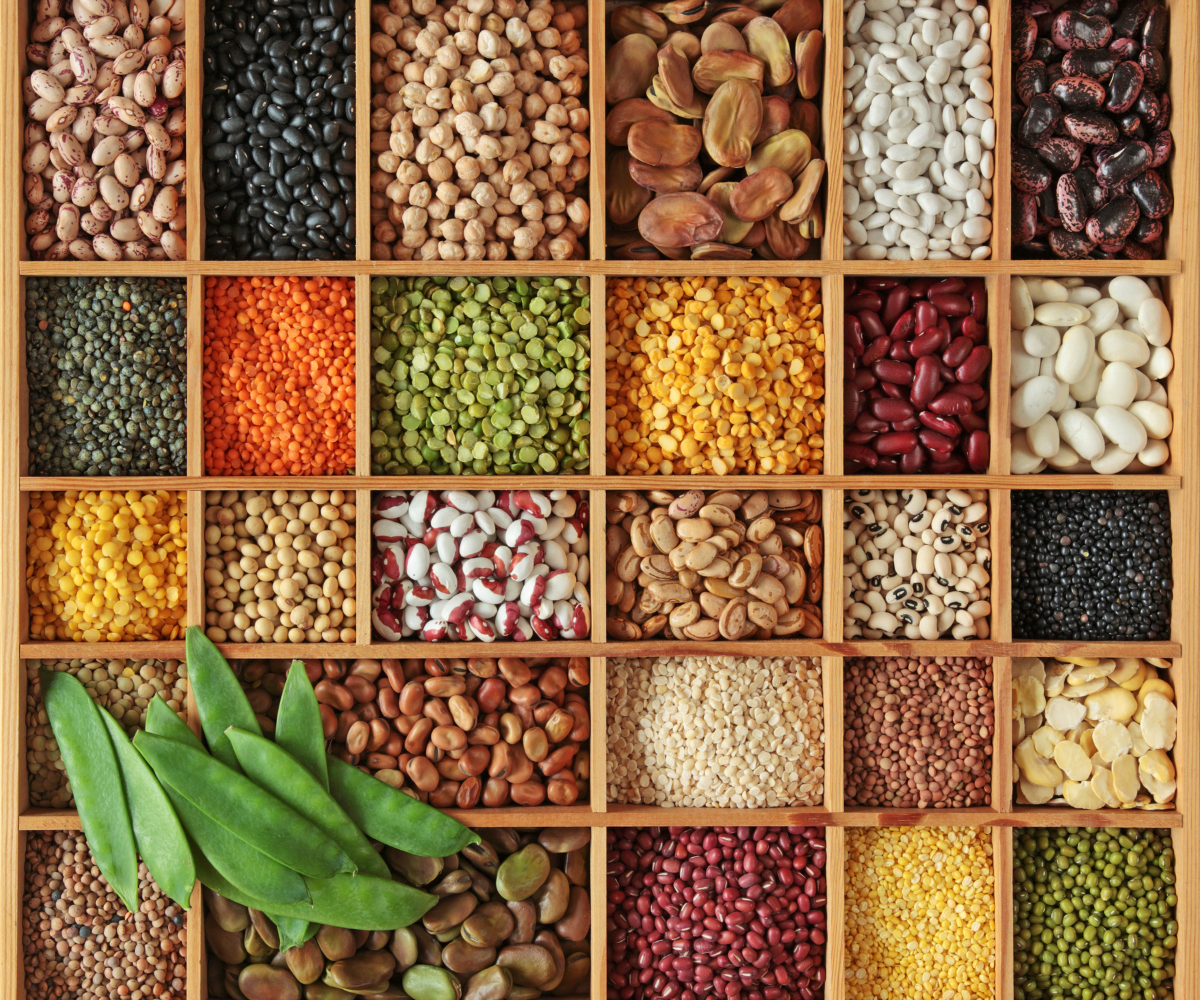People take supplements to improve or optimize their health. So what happens when you look at the label, and the ingredient list is filled with unrecognizable additives?
In the health and wellness community, butyrate has become a household name seemingly overnight as more awareness is surfacing surrounding its benefits for our microbiome.
People who want to take advantage of butyrate’s health benefits may be wondering how they can increase their butyrate levels. Through supplementation and increased intake of specific foods, we can definitely raise our internal butyrate levels.
Here we explain what butyrate is and what foods help improve butyrate production.

What is Butyrate?
Butyrate is a short-chain fatty acid (SCFA) produced by your microbiome within the colon. It is made by the bacterial fermentation of resistant starch in your gut. Healthy levels of butyrate in the gut promote a balanced microbiome, boost healthy gut function, encourage a healthy inflammation response, and support genetic expression by protecting DNA. SCFAs are fatty acids with fewer than six carbon atoms, and butyrate in particular has been studied extensively for its benefits on gastrointestinal, microbiome, digestive and cellular health.
Protect the gut, protect the whole body
Your digestive tract, from your mouth through the stomach, small intestine, large intestine, and all the way to the rectum, is the only place we intake substances from outside the body. Because of this, it is the most susceptible part of the body to inflammation and disease (especially with all of the pollutants and toxins in our modern world).
Accordingly, most of our immune cells and the microbes that regulate those immune responses live in our digestive tract. When we feed those cells and the microbiome the right foods—primarily resistant starch and soluble fiber—then the microbiome is happy and appropriately regulates the immune system. The microbiome is responsible for creating the right immune cells and cell responses to different threats, maintaining the integrity of the intestinal wall, and producing the right nutrients to maintain homeostasis in the gut. One of these key nutrients is butyrate.
Butyrate is especially important because it helps to repair the damage that pesticides, toxins, processed foods, drugs, and more have done to the lining of the gut. Research shows that the right levels of butyrate can help to support a healthy gut lining, reinforce the mucosal barrier, and keep you regular, moving those toxins and metabolic waste out of the body.
How Does the Body Produce Butyrate?
We get butyrate and other short-chain fatty acids from eating foods that are high in resistant starch. Resistant starch is a type of starch that’s quite literally “resistant” to digestion—meaning your body can’t break it down. Once resistant starch arrives in the colon intact, the good bacteria feed on it, producing butyrate—which provides essential energy to the cells that line the colon walls, also known as colonocytes.
Resistant starch
There are four types of resistant starch:
- RS Type 1: RS Type 1 is physically inaccessible, bound within the fibrous cell walls of plants. Note that only plants have cell walls surrounding their membranes; animals have only cell membranes. This type of resistant starch is embedded in the coating of seeds, nuts, grains, and legumes.
- RS Type 2: RS Type 2 is a starch with a high amylose content, indigestible in its raw state. Potatoes, unripe bananas and plantains reside in this group… until they’re cooked.
- RS Type 3: RS Type 3 is retrograde, called this because it transforms into resistant starch when cooked and then cooled. This occurs with foods like white potatoes and white rice. If reheated to a temperature lower than 130° F, it maintains its resistant nature and is able to feed colonocytes.
- RS Type 4: An RS Type 4 does exist, but it’s synthetic and not recommended for human ingestion.
Butyrate and the Microbiome
Butyrate is both a product made by the microbiome as well as fuel for the microbiome, in a sense. When the good bacteria, specifically the Faecalibacterium and Eubacterium strains mentioned above, munch on those resistant starches, they create the butyrate that feeds our gut lining. Therefore, we can refer to butyrate and SCFAs as postbiotics, or a product created by bacteria in the microbiome that goes on to nourish our cells.
A healthy gut lining is free from chronic inflammation and able to easily manage nutrient absorption and electrolyte balance, which means a healthier microbiome. Butyrate is a key player in this delicate ecosystem of the healthy microbiome.
Butyrate-producing Bacteria
There are a few different types of bacteria in the colon that produce butyrate (that we know of so far). The main strains that account for our butyrate production are Faecalibacterium prausnitzii and Eubacterium rectale/Roseburia spp. The groups of bacteria that these strains belong to (think genus and species) make up between 5 and 10 percent of the total healthy bacteria in the stool samples of healthy people.
Benefits of Butyrate
Butyrate is quite literally the food for the gut lining. Our gut colonocytes are tiny cells that line the colon in the gut and they are fueled by this important short-chain fatty acid. Proper levels of butyrate are vital to maintaining a healthy microbiome and supporting your gut health.
As a general overview, butyrate:
- Promotes gut/microbiome health
- Reinforces the mucosal barrier and modulates motility
- Functions as an HDAC inhibitor, meaning that it supports a healthy inflammation response by suppressing the activity of specific cells
- Supports healthy insulin response and healthy blood sugar regulation
- Promotes a healthy gut mucosa—Butyrate serves to close tight junctions and prevent the dysbiosis commonly known as leaky gut.
Butyrate and Diet: Foods High in Butyrate
Although supplemental butyrate has been used by integrative, and even allopathic, medicine, its endogenous manufacture is available—and free!—to those who eat the right foods. In many cases, this means slowly but measurably increasing our dietary fiber intake, which is lacking for so many people.
Maintaining a Balanced Diet for Microbiome Health
The old school of thought was focusing on supporting our body with our diet–-the micro and macronutrients we need to run our cells. This is still the case, but now we know that we should always be thinking about supporting our microbiome as well when it comes to our dietary choices.
We know now that we share our bodies with the billions of bacteria, fungi and even viruses that make up our microbiome. And their health is just as crucial to our wellbeing as the health of our cells. They are important messengers and endogenous creators of compounds like butyrate that support our bodily processes.
In many cases, dietary fiber is what feeds the microbiome, what you might have heard referred to as prebiotics. Prebiotic dietary fiber is what feeds our probiotics, which then create postbiotics, like butyrate.
Butyrate Foods
There are certain foods you can add or increase in your diet that either contain butyrate already, or they help the microbiome produce more butyrate in your gut. Here are a few notable examples.
Dairy
Dairy contains butyric acid, and some foods contribute to its manufacture. Butter offers about 2.7g in a stick and parmesan cheese about 730mg in 100g. As tasty as it is, eating 100g of butter is not recommended. But it can be a balanced part of your diet!
Cold Rolled Oats
If you’d like to add some interest to your resistant starch regimen, try overnight cold rolled oats. Just put the oats into a mason jar or other suitable glass container and cover with non-dairy milk (but not soy) or plain water. Refrigerate overnight. Add berries and/or cinnamon, if you like. This cold recipe will give you 8 grams of resistant starch. Cooked oatmeal eaten hot offers about half a gram of RS.
Legumes
Butyrate is produced during the fermentation of undigested dietary fibre such as the resistant starch and galacto-oligosaccharides (GOS) found in legumes. Beans, peas, and lentils (and their skins) are a good source of fiber and resistant starch, making them beneficial for digestion. As with many foods in this category, their butyrate levels increase when cooled after cooking.
If you’re starting to add more legumes into your diet, remember to go slow and notice how your body responds. It’s totally fine to start with a few spoonfuls a day and increase from there. Interestingly, beans are the only food that all “blue zone” diets have in common, making them a dramatically undervalued superfood.
Cooled Potatoes
Potatoes contain resistant starches when cooked and then cooled.
Cooled Rice
Rice, when cooled for at least 24 hours, also creates resistant starch.
Underripe Bananas + Plantain Flour
When choosing bananas, go for the green. They may taste less sweet but they are higher in resistant starch. Plantains are more resistant to digestion as well, so trying plantain flour may help increase levels of butyrate.
Whole Grains + Prebiotic Fibers
You can also get resistant starch from whole grains, fibrous vegetables such as asparagus and broccoli stems, the peels of some fruits, like apples, and other cellulose sources. As always with any food you incorporate into your diet, it’s important to observe your body carefully and notice how your digestion reacts.
Is It Possible to Get Enough Butyrate Through Diet Alone?
All gut microbiomes are not created equal. That means we cannot necessarily make the same butyrate levels as our friends. Aim for 25 grams + of fiber per day though if this is far too great of a quest, you can, fortunately, amplify your endogenous butyrate production with supplemental butyrate.
Butyrate Can Make a Difference in Your Health
Butyrate is a therapeutic postbiotic that is growing in popularity for its incredible impact on digestive health as mentioned above. If you’re dealing with digestive symptoms or disease, you can increase your butyrate levels through a combination of diet and supplementation.
- https://pubmed.ncbi.nlm.nih.gov/26868600/
- https://pubmed.ncbi.nlm.nih.gov/9361838/
- https://www.sciencedirect.com/science/article/abs/pii/S0924224402001310
- https://pubmed.ncbi.nlm.nih.gov/32040399/
- https://www.ncbi.nlm.nih.gov/pmc/articles/PMC6801921/
Share:
Related Posts

Goodbye Pie Chart, Hello Phase 1 Sliders
Written by Allison Smith, ND | 2025 As we usher in a new era of DUTCH testing which leaves behind the concept of the three-way

Introducing the DUTCH Dozen
Written by Kelly Ruef, ND | 2025 Hormone testing can be complex, which is why Precision Analytical developed the DUTCH Dozen, an interpretive framework that

DUTCH Report Enhancements
Written by Hilary Miller, ND | 2025 Precision Analytical have released the newest version of the DUTCH Test. This is the report’s most significant update

Gallbladder Health 101: What It Does and How to Keep It Working Well
Written by Ashley Palmer & Pooja Mahtani | 2025 The gallbladder may not get much attention compared to the gut, but it plays a central

Can You Bring Vitamins on a Plane? How To Travel with Supplements
Written by Austin Ruff | 2024 Are you traveling for a work conference, an athletic competition, or a weekend getaway? Just because you’re leaving home

